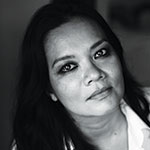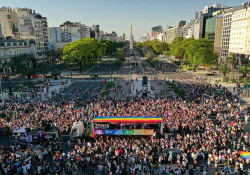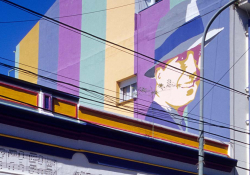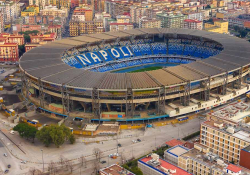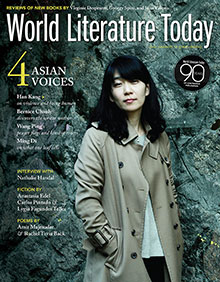Writing a Life Back into the World
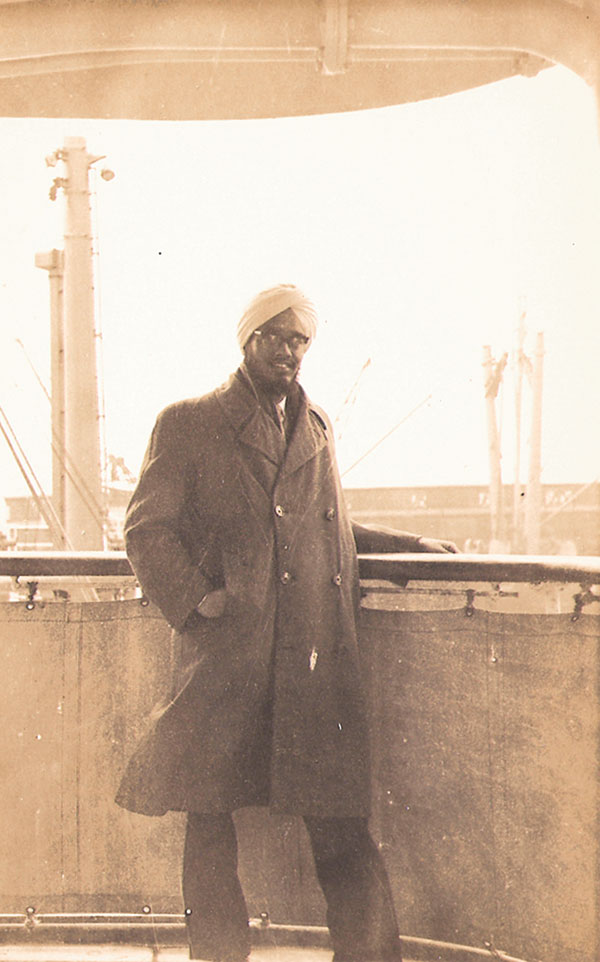
In the wake of her father’s death, a Malaysian author discovers the writer within and ends up writing herself into her country’s narrative.
My father’s untimely and tragic death when I was four made me a writer. It was that simple, really. There was a need for words, and words were what I turned to.
In the course of growing up in Malaysia’s third-largest city, Ipoh, a town that had a rich, checkered past of being the “town that tin built,” I immersed myself in books—books left by my father and mother. My father was Punjabi-Sikh, English-educated at St. Xavier’s Institution in George Town, Penang, then as a Colombo Scholar at Kirby College in Liverpool, England. My mother, Cantonese-Buddhist, Chinese-educated, then sent to Melbourne University in Australia. They had varied interests—poetry, literature, art, geology (my father was pursuing his master’s in geology at the time of his death), huge tomes on World Wars I and II, dog-eared, faded stacks of National Geographic from the 1960s, multiple volumes on Malaysian flora and fauna—birds, butterflies—invertebrates, vertebrates, carpentry, maps and rocks—books I still have in my library.
I suppose I read to fill that gaping hole inside me, that nameless void that kept me up at night and rendered me angry, confused, bewildered as to who and what I was.
I suppose I read to fill that gaping hole inside me, that nameless void that kept me up at night and rendered me angry, confused, bewildered as to who and what I was. “So what are you? Why do you have such a weird name?” Growing up with mixed identities—half this and half that—in Malaysia was common then, but it was not named. I did not know who I was, and my father’s death had created a chasm that needed to be crossed. I felt that I had been “cast out,” abandoned by the world, and I was utterly alone.
My mother’s insistence on buying me at least two new books a week was one of the few joys I had, apart from being able to sit in the curved rattan chair on the second floor of our semidetached house with a plate of biscuits, a glass of cold water, and a thick book. The afternoon sun would dip and it would be night, but still I sat and devoured everything, reading books cover to cover, then some again. In the Ipoh public library where my mother would leave me on weekends, I huddled in soft, dark spaces and read quietly for hours.

I also wrote a little, using essay assignments to play out my imagination; characters were marooned in deserts and stormy seas, in outer space. My teachers were supportive. I attempted poetry, but the images were the same—death, tombstones, epitaphs, an obsession with Edith Sitwell. It was necessary, but the poems were terrible.
My decision to take English literature in the fourth and fifth form was an important prelude for what was to come. My mother found me a tutor, Brother Vincent Corkery, one of the last Lasallian Brothers left in Ipoh’s St. Michael’s Institution. Brother Vincent was from County Cork, in Ireland, spoke with a soft Irish curl, had crinkly blue eyes, and loved literature. How I looked forward to those classes! They were held in the brothers’ quarters of that beautiful school—up the narrow, worn concrete staircases, past the neo-Gothic eaves into the dark and cool rooms, which smelled of holy water and starched cassocks, away from the rowdy shrieks of boys. I would ring the doorbell—three short rings for Brother Vincent—and he would appear, fresh after a nap, and we would sit for two hours, reading and talking about literature. We read Bernard Malamud, Doris Lessing, Hemingway, Frost, Yeats, Keats, George Bernard Shaw, and Shakespeare. He made me memorize passages from Shakespeare—Old John of Gaunt, time-honoured Lancaster . . . —made me pronounce words with gestures and feeling, and made my hair stand on end when he read out a passage so beautiful, so evocative, so pained. I learned beauty; that words had power and a meaning that lasted, that stayed on my tongue and my skin.
I did well enough in the O-level state exams and, as expected, got A’s in the English language and lit courses. As a result, I was offered a government scholarship to study English and TESL (Teaching English as a Second Language) in Canada. This marked the beginning of many things, but more importantly, the first step toward my life as a writer.

(aka Jane Chauly), 1967. Before marriage, Surinder
changed his name to Bernard Surinder Chauly.
My mother died in 2007, after a short and swift battle with cancer. She was sixty-six. At twenty-one, a failed love affair in Melbourne had left her brokenhearted, so she returned to her father’s house—a shop house in Ipoh’s old town—depressed and without a degree. A friend suggested she take an interior design course in Singapore. This, too, failed. The last resort was to take a teaching degree at the Malayan Teachers College in Penang, and it was there, in 1966, that she met my father. He had returned from England, was tall and handsome in a Sikh turban, had traveled and hitchhiked through England, Wales, Ireland, and seven countries in Europe—he was a man of the world. They fell madly in love, but it was forbidden. It was unheard of then for a Sikh man to marry outside of the race and religion, yet my father wrote beautiful love letters to my mother, in his mad scrawl—My darling Jane—on thin blue sheets of paper, letters that she kept at her bedtime table, letters I now have. They married, of course, without family consent, in a small church in Kelantan, on the east coast of Malaysia, and lived a simple life as teachers, until I was born. I became the peacemaker to my Chinese and Punjabi grandparents, and my father and mother, who had fought to love and live, were finally happy.
On January 6, 1973, on Miami Beach, Penang, my father drowned. He was thirty-three years old. I was four, my sister barely a year old, and my baby brother in my mother’s womb, unknown to her. My mother’s grief had no words, but there was pain—a deep, searing pain—that would slice itself into my family, again and again, for years. Months after his death, my mother wrote this in her journal: “Surin and I. For Bernice, Janice and Baby. May 1973.” She writes, in entirety, the great love affair that was, Surin and I.
In Winnipeg, Canada, one cold winter night, I started writing. I suppose that kind of clarity I had then, halfway across the world, was needed.
My parents left letters, postcards, journals, scrapbooks. They wrote with a beautiful lyricism, with nuance, with grace, love, and so much sadness. And in Winnipeg, Canada, one cold winter night, I started writing. I suppose that kind of clarity I had then, halfway across the world, was needed. My name did not seem so out of the ordinary; people were amazed that I spoke “like a Canadian—where did you learn English?” For the first time in my life I felt accepted. Not judged, not teased, not questioned over and over again. “So what are you?”
I started writing about my childhood in Ipoh, of growing up in my Chinese grandfather’s shop house, of the “old town,” of the narrow streets, of my grandmother’s cooking, of the butcher’s shop, of pigs and slaughter, of tears. Of growing up Chinese, yet yearning to be Indian.

As an English student at the University of Winnipeg, I took courses that I had only dreamed of—women’s studies in literature. Creative writing—creative writing! I took commonwealth literature, I took philosophy and sociology, Greek mythology, I had professors who inspired and intimidated me. I was learning so much, and I was writing. Poetry. There were lunchtime readings—I heard Rudy Wiebe, Leon Rooke, Irving Layton—the Canadian greats. I started writing more and more. And then I fell in love with the women. The writers whom I called my personal canon—Plath, Sexton, Atwood, Margaret Laurence, Kate Chopin, H.D., Elizabeth Barrett Browning, Emily Dickinson, Aphra Behn, Erica Jong, Louise Glück, Carol Shields.
One day my English professor, Judy Kearns, asked me, “Bernice, do you have feminist writers in Malaysia—do you have writers or poets like the ones you admire so much?” Her toothy smile left me momentarily stumped, stunned, and then I said, “Err . . . am not sure . . . hmm . . . I don’t think so.” That admission left me perplexed; did we not have any female writers in Malaysia? Did we not have confessional poets? Did we not have satirists? Memoirists? Women who wrote their lives with passion, fervor, and ambivalence? I kept saying, “Surely, surely, there must be someone.” Someone.
Twenty years after I started writing about my childhood in Ipoh, my mother died. In that time, I had written and published three books of prose and poetry, I had made documentaries and written plays, started a publishing house, and year after year kept writing this memoir of sorts—bits and fragments of my parents’ lives, bits of personal histories, here and there; the book became like a ghost that haunted me, year in, year out. And after my mother died, I knew that I had to write this book. This book—bookended by death. My father’s death made me want to write, and my mother’s death gave me the freedom to finish it.
So how would I write this book? I needed references, I needed to see what had been done in the past, how other female Malaysian writers before me had written trajectories of their lives. How it could be done. After all, we had a rich and varied literary tradition, we had the hikayats; the fantastical tales of anthropomorphic heroes and heroines, stories inspired by the Mahabharata and Ramayana, mystical lands, djinns, epic battles between warring forces, seafaring characters with fearless blades, princesses who had to be wedded and then saved, and we had the “pantun” or pantoum, the lyrical, gentle, and gorgeous Malay poems, with metrics and rhyming patterns, with solipsisms, sinew, and stunning beauty.
For two thousand years, the Malay Peninsula had Hindu, Buddhist, and Islamic influences that spanned the vast Srivijaya, Chola, and Majapahit empires. In the sixteenth century, the Malaccan sultanate came to an end with the arrival of the Portuguese in 1511 and the Dutch in 1641. The British landed in George Town in 1786 and stayed until the outbreak of World War II; traumatized by the brutality of the Japanese Occupation (1941–45), they returned to reclaim the country at the end of the war and in 1957 negotiated with Malay rulers and nationalists a peaceful transition to independence in 1957. With its multiethnic population of Malays, Indians, Chinese, Eurasians, and indigenous tribes, we had multiple narratives to tell, in multiple languages. But were we? As with many countries in Southeast Asia, oral traditions were the primary form of narratives, and the penglipur lara or storyteller was a revered figure in village life. But we were the sons and daughters of immigrants, our families fled famines, hardship, and came to Malaya in search of better lives, and with them came their stories, too. There were stories of diaspora, of hardship, of love, of wars. With the politics of race came the politics of language. The Malay nationalists wrote in Bahasa Malaysia, the Chinese and Indians wrote in English, Tamil, and Mandarin, and the language of postcolonialism was born.
In my search for a contemporary, postcolonial female narrative written by a Malaysian writer, I found only two books: Shirley Geok-lin Lim’s Among the White Moon Faces: An Asian-American Memoir of Homelands (Feminist Press, 1996) and Hilary Tham’s Lane with No Name: Memoirs and Poems of a Malaysian-Chinese Girlhood (Lynne Reiner, 1997). Both were published in America and came to me halfway across the world in a box from Amazon. Lim was born in Malacca to a Baba Nyonya or Straits Chinese family in 1944: “I was conceived and born toward the end of the bleakest period of the war . . . at the peak of Japanese torturous repression, and of food shortages and mass starvation.” Tham was born in the seaside town of Kelang in 1946, “in the house of the Soy Sauce Compound. Mother said it was just after the British came back to Malaya and the Japanese occupation troops moved out.” Both memoirs were written in America, both authors had married Jewish husbands, both wrote poetry, both identified as Asian American writers and feminists. Both had experiences of missionary schools and of loving English literature through the encouragement of the nuns and the brothers. Both studied at University of Malaya, were fellow students swept up in a liberalism and autonomy of thought and discourse that was infectious; there were probing philosophical concerns, doomed love affairs.
Structurally, Lim’s book is more chronological. It begins with life with her family, the kinds of familial and cultural affectations that came with being a “girl-child”: “The house was full of brothers, except for me, third born. I was a despised female, but I was also the only girl whose tears, whines, requests, whims and fancies my father responded to ashamedly. . . . How can I prove that I am not who I am?” Lim writes with brutal honesty, writes of being hungry “for almost two years,” charting incidences when her father beat her, beat her mother—“She lost two teeth to his fists”—and the pained loss of abandonment when her mother leaves her and her brothers and father, forever. “Was it the fear that all she could look forward to with him were years of hard labor, sexual betrayal, and violence? . . . Sometimes I think she abandoned us because she did not want to see our many hungry faces. . . . I will never know. She was there and then she was no longer there.” The scenes from her childhood are vivid and visceral: we see a hungry child longing for a mother and a father whose affections are given to other women; we see the consequence of loss and abandonment, and the thirst for knowledge that would give her the “first weapons to wreck my familiar culture.”
Lim goes to a convent and learns to write the alphabet; she hears the first strains of poetry, which were to chart a lifelong love for language and literature. She writes of the nuns, “Mother Superior was always white. A few white sisters, Sister Sean, Sister Patricia, and Sister Peter taught the upper grades; or they performed special duties, like Sister Maria who gave singing lessons, or Sister Bernadette, who taught cooking and controlled the kitchen and the canteen. Sister Maria was the only one who was recognizably French. Her accent was itself music to us as she led us through years of Scottish and Irish ballads.” I, too, remembered the nuns of my primary school. There was Sister Cyril who taught catechism and is the reason why I still say the Hail Mary with an Irish accent. There was Sister Clare who taught English, and Sister Martha whose visions of heaven and hell haunted my dreams.
Lim’s account of her primary and secondary years are filled with alacrity, a love for books and libraries, of boredom and willfulness, sexuality and shame, all things I could relate to. She visits her mother (whom she calls Emak or Malay for mother) in Singapore, meets her mysterious Chinese lover, gets involved in a terrible car accident, and then, months later, loses her virginity dressed in a Jantzen shirt, skin-tight green ski pants, and five-inch stilettos to a man called Rajan in an apartment where “the air conditioning was already humming.” I was astounded by Lim’s account of losing her virginity: these were taboos—things that had to be kept silent—and Lim just kept pushing the boundaries of all that could be said and not said. Her time at University of Malaya was punctuated with the dizziness of independence and the end of empire; she discovers Shelley, Yeats, Keats, starts writing poetry, and is alarmed when one of her professors accuses her of plagiarism. She writes openly of multiple lovers, a fleeting affair with one of her teachers, and the great love she feels for a man called Iqbal, of cohabitating with him, cooking lavish dinners of rich curries, imported cheeses, endless bottles of red wine, and eventual heartbreak when she decides to leave Malaysia on a Fulbright scholarship to America.
It is America that gives her a voice, that notion of self-exile perhaps; in its isolation, motherhood, marriage, and death, she is able to find freedom to write of a Malaysian homeland, “an imperative to make sense of these birthmarks; they compose the hieroglyphs of my body’s senses,” by feeling an absence of place, being absent in Malaysia, “myself absent in America,” she is able to write about “moving home.”
I had begun to understand that there were risks involved, that there was the possibility of ostracizing family, that truths were not necessarily going to be appreciated.
In contrast, Tham’s book does not trace the notion of a time line. Perhaps more organic in structure, there are vignettes of life and of growing up, quirky titles like “The Soy Sauce Compound,” “The Odd Job Man,” “Egg Noodles,” “The Nuns,” “Leila’s Wedding.” There are also more photographs and poems, which are intertwined between the texts. Her startling dedication page reads like this: “The idea of writing my memoirs goes against the grain of my upbringing. Though I had breached the taboo with my poems, prose feels like a greater violation.” I thought this was shocking, this idea of “going against the grain,” of “breaching taboos with poems,” of “prose as a greater violation.” I had begun to understand that there were risks involved, that there was the possibility of ostracizing family, that truths were not necessarily going to be appreciated. In the last page of the prologue, she says, “I love the American bone-deep belief that anyone can be anything if you work hard. . . . That not pursuing the dream is a disgrace; failure to achieve is not. This concept is the most liberating and empowering gift America has given me. Without embracing this ideology, I could never have written about the real faces between the preserved faces of my life, my family, and my people.”
This concept was liberating, but I was cautious. That being in America allowed her to write this? That perhaps the liberalism of my Canadian education also allowed me to see the possibilities of writing as an Asian woman—yes, that the fears of breaching cultural taboos was real, we all had to “save face”—to stave off inevitable Asian shame that would plummet entire families into silent humiliation, scorn, and closed doors—but it had to be written. After all, what else would be the point? Silence was the norm, and that norm was no longer possible. Writing about all that was personal, what was real and felt in our stories, was vital and necessary. So, it was possible, and Tham had done it, as did Lim. There were now ways of writing these stories down. Being away in a foreign land had given us perspective. But Lim and Tham had not returned; they had stayed in America, had children and careers, and lives. I had decided to return to Malaysia; I had decided that I needed to be in the country, in the land that had birthed me.
I summoned my memories: Poh Poh—Grandmother—How did you come to Malaya? How old were you? What was the Japanese Occupation like? These were questions I asked my grandmother as a child, in my halting Cantonese, in between helping her chop vegetables and set the table for long family Chinese lunches. I had two other aunts who had died? Or were they left for the nuns on the doors of the convent? About my great-grandmother being kidnapped by Japanese soldiers and escaping in the middle of the night after being guided out of the jungle by a white butterfly. About my mother eating nothing but sweet potatoes for two years and having worms infest her belly again and again. About having to dig holes by the riverbank to hide from the Japanese. About eating tree bark, seeing heads on sticks, with crows stuck on dead eyes.
Tham’s multiple narratives in the section called “The Soy Sauce Compound” also showed me the possibilities of writing from different points of view. There were monologues—“Brother remembers . . . Mother remembers . . . Father remembers . . .” Three perspectives on the same aspect of family history. The multiplicity of memory. The possibility of more than one narrative. Tham writes vividly about descriptions of food, something so intrinsically Malaysian: “It was fascinating to watch the egg cooking—to see its transparent albumen turn solid and white. Then the noodle man would swirl the yolk and white together with his steel spatula, stir-frying the noodles and egg together until little specks of white and gold on the noodles, like dandruff on golden hair.” In “The Nuns,” she says, “My earliest ambition was to become a nun.” I could relate to this—after all, when one is imbued with anger and doubt, religion is an opiate that is seemingly able to feed all one’s worldly needs. The nuns and the brothers played significant roles in our lives, and this felt vocation was indeed a possibility for many of us who studied in the missionary schools. Lane with No Name thus offered me yet another alternative of a female Malaysian memoir.
But the pervasive issue was this: both Lim’s and Tham’s memoirs were written in a state of exile. As Lim writes in her essay entitled “Semiotics, Experience, and the Material Self,” “Asian women writers in the twentieth century were and continue to be marginalized by gender. . . . In nations where national identity has been forcibly equated with a national language policy, by their choice of writing in English . . . the Asian women writer, like women everywhere, continues to be constituted by a Male Other. . . . When the society is Confucian, Hindu, Muslim, Christian . . . the female is always a colonized subject. . . . Colonial and postcolonial women have suffered a double-colonization. . . . In order for the woman to write in this doubly colonial world, the self must be in exile, she has to leave the rule of her community and become, if only in her writing, undomesticated, wild.”
So where was I to begin? And how would it end? I was not a writer in exile, nor did I think, in 2007, that the postcolonial narrative or schism still applied—to me. In the ten years since Lim’s and Tham’s books appeared in America, a lot had changed in Malaysia. There were emerging voices; stories were being told that hadn’t been told before. In 1998 the Malaysian Reformasi propelled ordinary Malaysians into the streets in the tens of thousands, people revolted against the decision by Prime Minister Mahathir Mohamad to sack, arrest, and then imprison his deputy, Anwar Ibrahim, for sodomy, a crime that was still punishable by draconian, outdated colonial laws, laws used to silence us. There was a salient, visceral anger on and off the streets; a pervasive sense of self began to invade us—a once-silent people who were not going to be silent any longer—voices needed to be heard. Voices that were no longer afraid, voices that were part and parcel of the Malaysian narrative.
So the work began. I interviewed aunts on both sides—some refused to speak to me, citing that all-familiar strain, How can you write about this! I asked and probed, traveled across Malaysia to speak to Manji—my Punjabi grandmother, alive still, in her nineties—to London, Devon, and the depths of the Welsh countryside, and finally to my ancestral village in the Punjab, India. There would be no rest for two years, until the book was done. But I had lived with it for twenty-three years; the proclivities of (re)imagining and (re)writing a hundred years of family history set against the backdrop of the Chinese/Punjabi migration and diaspora would allow me to excoriate my grief and set my ghosts free.
And so the book was written, in multiple narratives, navigating bloodlines, curses, histories. I had to write myself into my country’s narrative; I had to be named.
French-Algerian writer and theorist Hélène Cixous wrote, “In order to start living/writing, there must be death.” She, too, had lost her father, and she wrote of a sense of “eviction” from the world, that something so traumatic as losing a parent was likened to a sense of being cast out from the world of the living.
And so the book was written, in multiple narratives, navigating bloodlines, curses, histories. I had to write myself into my country’s narrative; I had to be named. I was not in exile; I chose to write from the present, with my feet firmly on Malaysian soil; I chose to be visible, to be seen. It was a risk, an act of faith.
My father’s death had evicted me from the world, and the only thing to do was to write myself back into it.
Kuala Lumpur
